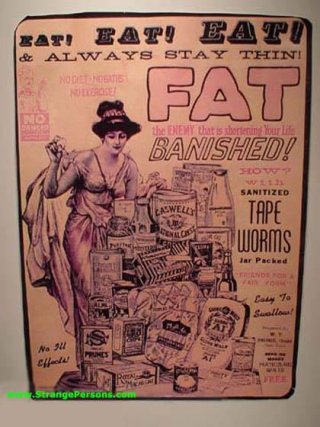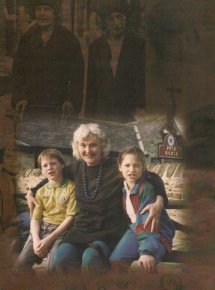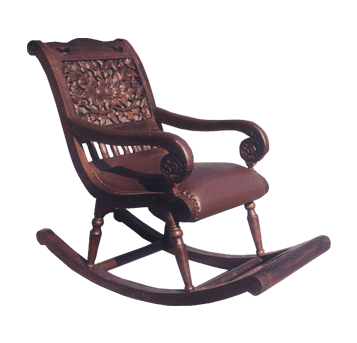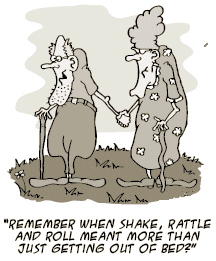
Issue #23,
April, 2009
On the
flank of Monte San Biagio, Maratea, Italy
Welcome
to the April 2009 issue of the Elderwoman Newsletter
- an e-zine for
21st century elderwomen committed to radical aliveness.

|
I am
later than I meant to be with this newsletter and the (northern) spring
is well under way.
Flowers everywhere, trees coming into leaf and birds nesting. Any day
now, the swallows will be back.
|
There
are two reasons for my not preparing this issue in March as I intended
to. One is that I have been working, this
past few months, on a new book. Not as the author this time, but as the
editor, bringing together the writings of more than two dozen people on
a subject that is very close to my heart - green spirituality.
Once
the manuscript was completed and handed in to the publisher, I claimed
my reward, which was a brief vacation in Maratea - one of my favourite
spots in southern Italy. So the second reason this newsletter
is late in reaching you is that I only just got
back.
So now it is time to get busy again, for there are seeds to be
sown. Not just the seeds of all those vegetables that will feed us this
coming summer, but the seeds of new ideas and new projects which,
having lain dormant through the winter months, are now ready to
germinate in the bright April sunshine.
A lot of people have signed
up to the mailing list since the previous newsletter. Welcome! Remember
you can browse back issues at www.elderwoman.org/newsletterarchive.htm
 |
And
for those who have not yet joined our
social network -
Elderwomanspace - I encourage you to do so. Just ask and I shall be
delighted to send you an invitation. |
Many blessings,
FEATURE
ARTICLES
THE
WORLD TAKES A HIKE IN THE WORLD
by Christina Baldwin
Over the Spring Equinox in the northlands,
author and naturalist Ann Linnea and I were offering our sweet spirited
seminar
that combines the love of nature and journal writing. This session, Spirit and the Pen in Nature, was held
at Menucha
Center,
a large estate turned to use for
many good purposes by the First Presbyterian Church of Portland which
has owned
and managed the property in the past several decades.
Menucha is located at the entrance of the
Columbia River Gorge on a high cliff overlooking miles of basalt
canyons and a
string of magnificent waterfalls that shoot off the ledge of the Mt.
Hood
drainage and into the Columbia River and from there to the sea. One of
these,
Multnomah Falls, is a dramatic 611 foot plunge, the fourth highest
waterfall in
the United States,
and quite
a tourist attraction, being accessible both from Interstate 84 and the
scenic Columbia
River Gorge Highway
built in the early 1900s and only 30 miles from the city of Portland.
So here we are in the middle of our journal
writing and nature appreciating and we have designed into the center of
the
seminar a solo day in nature: time and space to move around in this
magnificent
landscape in the attitude of pilgrimage. It was Saturday, the first day
of
Spring – yes our landscape would be shared with other people, with a
stop at
the espresso stand, with getting in and out of cars–and the invitation
remained: to move as a pilgrim, to practice an inner attitude of
listening to
the voice of nature, to the open heart, the observer’s eye, and the
greening
mind into the water-tracked forest. Be back at our retreat house by
5:00–everything else: you decide.
Ann and I headed up and around Multnomah
Falls, a 5.4 mile loop with 1700 foot elevation gain that would take us
about
four hours of walking, stopping, photo taking, marveling at the depth
of green,
the trees that had fallen in winter storms, the creeks and waterfalls
roaring
through the rock face, and the life-death-life-death cycle of the
forest.

And here was our big surprise: people. This
is not an easy trail. There are many switch backs getting folks up to
and down
from the ridge line. It was rocky and muddy and the weather switched
from cool
filtered sunshine to clouds to pouring rain in the course of the day.
And yet,
we passed at least a hundred people from babies to other 60 year olds,
folks
walking their dogs, children and many college-aged young people. And
diversity:
Hispanic, Asian, East Indian, Middle Eastern, African-American, and
Caucasian
folks all enjoying the same magic of nature–though each in our own ways.
It gave me
great hope: that young people
want to be in the woods, not just in the computer game version of the
woods,
that young families are bringing their children out to take part in
nature
adventures, that couples where the women are in saris or scarved in
Muslim
attire are walking in the gorge of the American west. And we are all
smiling,
nodding in passing, saying hello, holding each other’s cameras for
those
look-where-we-are photos. Could world peace be this easy? Could nature
stitch
together what religion and politics have torn apart? Well, it’s the
first day
of spring–and anything is possible.
In the midst
of the rain, at the end of our
hike, we passed a family coming down from a 2-mile loop up to the top
of the
falls and back. A baby in arms, and two little girls, the oldest about
five.
They were soaked! The little girl and I looked at each other: her hair
plastered to her face, wet hoodie, wet sneakers, she was practically
skipping
through the storm. Here came a huge grin, and she announced to me,
“Wow, isn’t
this place awesome?!” Now, that’s a true child of the Pacific Northwest! I wanted to
pick her up and hug her, and I want to save
the natural world for her to be hiking in when she is sixty!
Taking a hike
in the natural world is a
great way to savor the beauties of life without needing to spend any
money! And
maybe that is part of what got people out of the city and into the
forest–the
bounty of Nature. There is so much given us to enjoy–all we need is to
discover
what’s next. Here come the songbirds, and the snowdrops and then the
daffodils.
May you have a
week full of new eyes.
An
influential
figure in the therapeutic writing movement, Christina Baldwin is the
author of
five books and a renowned teacher, conference presenter and co-founder
of the
educational company PeerSpirit. Christina has contributed two classic
books to
the exploration of journal writing, including the well-known classic, Life's Companion: Journal Writing as a
Spiritual Practice which has sold over 100,000 copies and was
recently
revised and reissued by Bantam Books. Her most
recent book,
Storycatcher: Making Sense of our
Lives
through the Power and Practice of Story (New World Library)
reminds readers
of the necessity of story to communicate in all areas of professional
and personal
life. Baldwin lives
on an island near Seattle, Washington,
where she is currently at work completing The
Circle: A Leader in Every Chair, to be published by
Berrett-Koehler.
My Many
Mothers’ Hands
by Ginger Child
I
gaze at my hands in the early morning light.
I see the age spots, the cuticles that need
oil, the lines everywhere, and the rings that announce my marriage to
the love of my life. Various scars that are part of my story, an IV, a
knife slip. But,
here’s what I don’t see. These
hands have touched six generations of my life. Newborn,
I have learned that my Mama and I stayed with her Grandmother for my
first several days. I
like to think of Great Gramma Cassie holding me, touching my tiny hands. Growing
up next door to my Gramma Alma, our hands touched many times, receiving
food, doll clothes, sitting in her lap to hear Bible stories. Her hands were always busy
with quilt piecing. Then,
my Mama’s hands. Her
name was Mary. She
taught me to cook and sew. She
curled my hair around her fingers into “pipecurls” for church. Her
fingers turned pages of books she read to us, like “Kon Tiki”. Her
hands soothed and nursed us through pains of all kinds. Even after I
was a mother I felt her kind touch. Her hands rested from their labor
in 1977. My
hands fashioned doll clothes from Kleenex and scotch tape, flew kites,
helped dig a cave, climbed trees, picked up walnuts from the ground in
the fall, created a wreath from thorny pyracantha, made a nativity
scene complete with stars and wise men marching down the road, wrote
poetry, painted pictures, carried countless books between the library
and home. They
stirred Christmas fudge and helped decorate the tree.
They learned to use a sewing machine and never
get stuck with the needle! They
sorted buttons by color and threaded elastic through waistbands. My hands played the piano
and an old pump organ. They
learned to make music on a trumpet, and picked fruit from our trees. They helped prepare that
fruit for canning and freezing. They
dug in the newly turned spring dirt and planted potatoes. In the fall they dug up
those potatoes. My
hands learned to touch boys’ hands, and I began to leave childhood
behind. They
learned to give and receive love in a new, delightful way! Poetry flowed out of my
fingers in a torrent! Then
my hands became mother’s hands, and I tended my family and made art. They were covered with
tears many times as my life moved on, and clapped in surprise and joy
as well! These
hands of mine made birthday cakes and clothes for my children. They made toys and
administered medicines. They
did the laundry, shopping and cleaning, just as my mama’s hands did for
us. Then these hands signed divorce papers. My
daughter, Cynthia, learned to use her hands to cook and sew as hundreds
of her mothers before her did. Her
hands wrote poems and petted kittens, made lumpy clay ornaments and put
tinsel on Christmas trees. They dressed dolls and those kittens! One summer at Vacation
Bible School one of her hands was impressed in a tin of plaster, and it
lives forever in my heart and hope chest. She
grew up and as I learned to let go of her hands, she walked her path
and finally became mother to a daughter, Breanne. Breanne
is turning six today, and so I’m thinking of these six generations. Breanne’s hands have
wrapped around my hands and my neck and my heart for 6 years, and I am
blessed! Her hands
write sentences now and have been making art since she could hold a
crayon. We’ve made
clay things and painted them together.
She helps me with cooking and baking. “Grammy,
I want to MAKE something”, she exclaims to me, and out come the art and
craft supplies! Her
little hands cutting, gluing, writing, coloring, painting, stamping,
making art, like her Grammy loves to do.
I
gaze at my hands in the early morning light, and imagine them holding
Breanne’s little baby in them some day, a tiny hand grasping my finger,
seven generations. I
hope my hands will still be here then. I
love my hands and the history of the women of my family that I hold in
them. 
Ginger
is 63, the grandmother of three, bride of four years to the love of her life, a
writer since childhood, multimedia artist, liberal Crone, and curious about
everything! She comes from a missionary family and spent her formative years in
the Peruvian jungle!
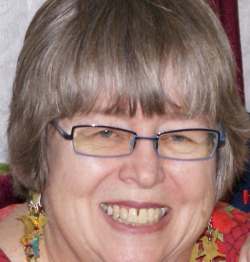 "Joy is Peace dancing,
Peace is Joy resting!" "Joy is Peace dancing,
Peace is Joy resting!" |
REPORTS/NEWS/BITS
AND PIECES
| At age 29 she was a Playboy Bunny; later on,
a crusading feminist. Now times have changed, and Gloria Steinem (age
74) is thinking about age. "Fifty was more about defiance for
me: 'I'm just going to go on doing everything I did before.' And it
wasn't until I was about 54 that I realized that doing everything I did
before was not progress. Hello? And 60 was exciting. Sixty was like the
new country. And 70 does sound like mortality. And it does make you
think about dying." For more on her thoughts about age, see Gloria
Steinem, Doing Sixty and Seventy (Elders Academy
Press, 2006). |
 |
From
'Human Values and Aging Newsletter', January 1, 2009. Thanks
to Emily Kimball, aka 'The Aging Adventurer,' for
passing this on. And for this bit of health advice also:
Forget the treadmill and
the barbells for encouraging fitness. The latest idea in exercise is
called Plyometrics, which means using your own body weight as the
instrumental source. Simply put, we are encouraged to return to some
childhood play. Jumping, hopping, and skipping are all forms of
exercise that increase muscle power, strength, and explosiveness. A
study at Loughborough University in England found that regular hopping
was among the best ways for women to improve their bone density. The
amount and strenuousness of the plyometric activity depends upon the
condition of one's joints, so don't stress your knees or hips. The
following are some ways do plyometric exercises.
- Climbing up
stairs two at a time
- Drop
jumping: Stand on a box a few inches off the ground. Drop to the ground
and then jump upwards and forwards as high as you can. Repeat 10 times
(or less).
- Skipping:
The U.S. National Institute of Health claims that skipping burns more
calories than any other popular exercise except running. Start with a
one to three ratio. For every minute skipping, rest for three.
- Lateral
hops: Place an object by your right foot. Hop over it to the left then
back again. Do this 15 times, if you can. Then repeat this with your
left foot.
From: Plyometrics by
Peta Bee. The London Times, July 14, 2008, (as
published in The Positive Aging Newsletter, December 2008).
| Emily
says: "This article made me want to go out and buy a jump
rope and to try skipping around the block! (Be careful though.)" |
|
Seems incredible now, but ...
I actually remember the Camel ad. It was still around right up till the early 1950s as far as I can remember. But did they really swallow tapeworms and douche with Lysol back in the 1930s? Yikes!
 | 
|

|
POETRY
|
Toffee Tin
A square tin, so familiar 1 never really
saw it;
until to-day, that is, when he is in my
mind,
a soldier with a golden heart. My father,
with his
special tin
locked away in the sideboard cupboard, to
which
only he held the key.
A
square tin, on its side a painted palm
tree;
I remember those toffees,
wrapped in shiny green paper,
unyielding in the mouth, but mellifluous
on the tongue. Long after they'd all melted
away,
that box held my father's treasured papers.
On
special days I was allowed a glimpse:
some
sepia photos from his service in India,
there he is astride a horse, proudly
wearing
a topee, his eyes squeezed against the
brutal sun.
Torn scraps of an identity card, showing
name,
number and battalion.
Decades
passed and "right
of the line, second to none" my father
would intone
when random phrases were all his brain
could frame.
Only I could crack that code, all that
remained
after his stroke. A few sentences and place
names
from that far country he had learned to
love:
Jaipur, Bangalore,
Rajastan—words with spice in
them,
so different from English toffee.
When
he died, I took the tin, I keep it on
my desk.
I can leaf through all those papers now:
my exam results, their marriage lines,
some tattered letters, transparently cheerful
when times were hard. A love-letter,
written to my mother
from India
in 1924. He speaks of the
beauty of an
Indian sky
at night, wonders if she too scans a
skyline
with him in mind.
Their
secrets all are open now to my
curious gaze,
reminding me that my own may one day be
seen
by strangers' eyes. I hope their memories
will be
sweet as toffee on the tongue.
|

My friend Lis Bertolla has
published several volumes of poetry and this poem, 'Toffee Tin' (as
well as the one I published in the previous newsletter entitled
'Passing Seventy') is from the latest volume, Three
Generations.
It is highly personal poetry and it strikes a deeply resonant chord
with me. I hope it does with you also.
Lis's children, like mine, are grown up now. But here, from the back of
the book, is a picture from an earlier time.
|

QUOTES
"...
if a woman never lets
herself go, how will she ever know how far she might have got? If she
never
takes off her high-heeled shoes, how will she ever know how far she
could walk
or how fast she could run? "
“I
didn't fight to get women out
from behind vacuum cleaners to get them onto the board of Hoover.”
~ Germaine Greer

"
‘Being conscious’ is,
after all, not a spooky extra kind of stuff, but just one of the many
interesting things that complex organisms can do.”
~ Mary Midgley
|
CALL
FOR SUBMISSIONS
Contributions
for this newsletter are eagerly sought. Please send in your writings,
your thoughts, your poetry, a book or website you have found, an
announcement or news item that you think would be interesting to
others, a comment on one of these articles, a subject you'd like to
see, an anecdote, something that moved you - whatever snippet you want
to share. Don't be shy.
Back to top
|
|
LAST
LAUGH
Forgiveness
Toward
the end of Sunday service, the
Minister asked, 'How many of you have forgiven your enemies?'
80% held up their hands.
The Minister then repeated his question.
All responded this time, except one small elderly lady.
'Mrs. Neely?'; 'Are you not willing to forgive your enemies?'
I don't have any.' She replied, smiling sweetly.
'Mrs. Neely, that is very unusual. How old are you?'
'Ninety-eight.' she replied.
'Oh, Mrs. Neely, would you please come down in front & tell us
all how a
person can live ninety-eight years & not have an enemy in the
world?'
The little sweetheart of a lady tottered down the aisle, faced the
congregation, and said: ‘I outlived the
bitches!’
|

The
Elderwoman Newsletter by Marian Van Eyk McCain, April, 2009
The Elderwoman website: http://www.elderwoman.org
Marian's e-mail: marian(at)elderwoman.org
NB: replace 'at' with the @ sign, and please
remember to
insert OKEM in the subject
line to make sure you get through my three
layers of spam filtering!
Unfortunately,
the filters are a necessity to stop
my in-box flooding with spam.
- oh and when you write to me, please remember that my name
is spelt MARIAN.
(I get quite irrationally snitchy when people spell it with an 'o.')

Back to top
|

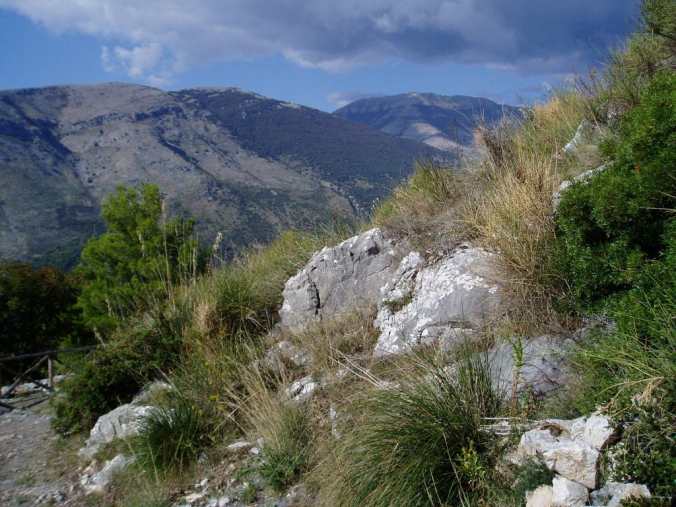






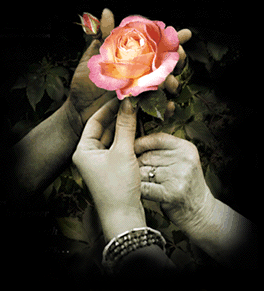

 "Joy is Peace dancing,
Peace is Joy resting!"
"Joy is Peace dancing,
Peace is Joy resting!"



